构建紧密的因果系统有助于提升游戏趣味性
作者:Daniel Cook
为了玩好一款游戏,玩家必须掌握一种因果心理模式。例如,你按下某个键可以向前移动一步。你算出移动的结果是避开火箭。你观察到在敌人进攻以前有一阵短暂的停顿,那正是爆头的好机会。在学习的各个阶段,你都形成新的假设,通过你的行动验证它,然后改进你的心理模式。
改进和掌握新的心理模式是必要的,因为这正是使许多游戏有趣的原因。这种掌握显然取决于玩家。但也受到设计师和他们所创造的系统的支配。
并非所有系统都可以通过因果模型的直观形式轻松检验出来。作为游戏设计师,你的职责是创造一种系统,玩家在掌握它的过程中感到有趣,而不觉得受挫。如果系统太容易预测了,玩家就会觉得它无聊。如果系统完全不能预测,我们就说它是随机的。这两种都是失败的系统,因为无法鼓励玩家去掌握它。
紧密和松散的系统
作为一名系统设计师。我将系统和反馈(即玩家与系统之间的交互作用)之间的相关程度描述为“紧密”或“松散”,这一重要概论对我帮助很大。在紧密的系统中,有明确的起因和后果。而在松散的系统中,则很难区分起因和后果的关系。
系统中不存在正确的“紧密度”。然而,增加紧密度或松散度却有清楚的方法。
调整紧密度的技巧
为了方便阅读,我将用于调整系统的紧密度的方法罗列成下文。并非所有的方法都适用于某个系统,但内行的设计师都应该掌握这些方法。有些方法当然比不上专门的书籍文献,所以我要为自己的肤浅提前道个歉。例如,概率有太多微秒之处,以至于有些设计师倾其一生都在研究它如何影响玩家预测结果的能力。本文至多只是一个综述。
为了增加系统的紧密度,我要让因果关系更显著。为了增加系统的松散度,我要让因果关系更隐蔽。
反馈的强度
紧密:具有多种均衡反馈的渠道,如颜色、动画、声音和触摸,这些可以互相加强。经典例子是《幻幻球》。游戏采用星星、彩虹、《欢乐颂》和时间延长让玩家知道游戏结束、得到积分。
为了达到效果,我使用了所有可能的渠道吗?
反馈顺序是否正确,以便玩家充分理解?
反馈是否影响现有的心理模式,使之变得更加有效?
松散:有一种不太明显的反馈渠道。例如,在多人FPS游戏中,有人逼近时,唯一的感知方法就是听来人微弱的脚步声。资深玩家因为了解关卡的知识,再加上隐蔽的提示,能够估计对手的方位,因此能在这种预测中感到极大的乐趣。
反馈是否存在临时检查时不易理解的细微差别?
反馈是否可以与其他的不明显的信息相结合,使骨灰级玩家在脑中形成清楚的图景?
噪音
紧密:由原因导致的后果具有清楚的信号。
玩家现在需要的信息中,最重要的一小部分是什么?
是否移除了干扰玩家的无关元素?
反馈是否处于玩家关注的焦点?
松散:存在大量矛盾的、干扰性的信号,并且与原因无关。在Jeff Minter的《Space Giraffe》中,最关键的技巧之一就是,学习理解迷幻背景的视觉噪音。
有没有能干扰但又不激怒玩家的外界元素?
噪音是否能够给玩家制造感知谜题?
感官类型
紧密:视觉或触觉反馈往往更容易被感知。考虑到每年都有几十亿美元砸在提高视觉反馈技术上,所以我们有理由相信玩家看到子弹打在模拟得很逼真的肉体上时,内心的感受更强烈。紧密的视觉反馈的作用是很强大的;它能高效地向玩家传递结果信息。这不只是制作精美的画面。在《三重小镇》(Triple Town)最近的更新中,我们改变了颜色方案,使背景与前景物品具有相同的常规值。结果很漂亮,但玩家很不乐意,因为图标不像以前那么显眼了。
是否使用了良好的视觉设计,如颜色、动作、对比、线条、空白、阴影、体积、视角,使画面更容易理解?
当需要某物发挥功能时,是否使它更好看?
什么反馈是功能性的,什么是情绪性的,什么是美观性的?
是否在视觉反馈上投入过多?
松散:相比于视觉和触觉,听觉和嗅觉反馈更难被感知。这方面的运用不多。但因为系统的松散度,运用声音的系统也有被玩家掌握的可能。有些讽刺的是,虽然大多数音乐游戏与掌握听觉反馈有关,但都可以关掉声音玩。
挖掘现有的心理模式
紧密:严格地将主题、反馈和系统映射到现有的心理模式中。因为接触了流行文化十多年,玩家知道僵尸怎么移动和怎么躲避僵尸。要让玩家很快知道某类慢速移动的怪物是什么,最好的办法之一就是把群怪物命名为“僵尸”。
玩家头脑中的卡通模型是什么(不是“现实世界运作的真实模型”)?
主题是否支撑机制?
主题是否使核心机制产生有用的变化?
为了适应主题,是否犯了削弱机制的错误?
松散:脱离现有的心理模式,引入玩家从未经历过的新系统。想想《俄罗斯方块》中的隐喻。怎么处理下落的图形,我们的头脑中相当熟悉。排成行的图形消除后,玩家得到积分,但这时响起的却是俄罗斯音乐?这与我所知的任何隐喻都无法匹配,不过,游戏仍然是好游戏。
什么时候不再需要导入模式,游戏可以凭借内部一致性而独立?
有没有超越现实或刻意干扰的因素?
能否摆脱旧的模式,引入新的体验?
离散性
紧密:离散的状态或低值的数字。二进制是最紧密的。例如,最近我们正在玩以各种速度移动的单位。让它们以1/2/4格每秒的速度移动,玩家会很明显地知道如何区分各个单位类型。处理难控制的系统时,这是我最喜欢的技巧之一。
为了创造有意义的选择,数字的最小值是什么?
玩家能否清楚地区分各个值的增量产生的影响?
如果必须将变量减少成3个离散值,会产生什么结果?
松散:类似值或高值的数字。例如,在《愤怒的小鸟》中,游戏允许玩家以任意角度和速度发射小鸟。这使结果非常不确定。如果游戏只有2个不同的角度和速度,那这款游戏就太容易预测(无聊)了。
玩家是否有足够的创意游戏的范围?
值是否给选择增加了有趣的不确定性?
速度
紧密:因果相隔的时间比较短暂。在《暗黑》中,玩家将鼠标放在发现的箱子上,鼠标放在道具上和悬浮对话框出现之间有一个时间延迟,这段延迟设定不当是常见的错误。如果延迟太短,悬浮对话框出现时玩家还没发现。如果延迟太长,玩家会觉得对话框响应太迟钝(以我的经验,200毫秒是最理想的。在这段时间内,你决定做某事,但清醒的意识还没完全跟上)。
游戏在什么地方发生延迟?
如果加速计时,结果是什么?
如果减速计时,结果是什么?
什么系统允许间接地变化计时?
当可以使用算法循环调整速度时,是否使用了手动?
松散:因果相隔的时间比较漫长。如果延迟太长,玩家完全不会发现原因产生了结果。想象一下,在RPG中,玩家有一个开关和一个计时器。如果玩家按下开关,计时器显示60秒后,门才打开。极少人会认为门打开是因为按下那个开关。另一方面,在《Alpha Centauri》中,过早投入工业会导致外星人攻击。这创造了更丰富的系统,使玩家要权衡很长时间。
游戏中的长循环是什么?
是否有长期效应导致玩家重新考虑他们长期以来的游戏模式?
线性
紧密:线性增加的变量更容易预测。在《塞尔达传说》中,比较一下以直线抛出剑刺中敌人,或者用弧形运动的回旋镖,哪个更容易预测呢?
如果简化模式,使反应呈线性,结果是什么?
如何从早期的玩法中移除非线性的系统?
松散:非线性增加的变量,更难预测。在《恶魔城》中,美杜莎的头对许多玩家来说非常难打,因为头的活动不是常规的线性运动。即使像重力那么常见的东西也会使玩家离开游戏。毕竟,我们琢磨出如何准确着陆炮弹都花了上千年的时间。
什么系统本质上是指数形发展的?
如何约束非线性系统,使之更容易预测?
如何通过反馈循环创造有趣而无秩序的行为?
间接性
紧密:起因与初始效应直接相关。还是以《塞尔达传说》为例,主要的攻击具有高度的直接性。你按下键,剑弹出,同时命中附近的敌人。
要移除什么系统才能使动作的结果更加明显?
认知负担是否足够大?
松散:起因引发次级(或三级)系统,再由次级系统引发效应。模拟和AI之所以无法破解,是因为无数重的间接性。在《模拟地球》中,玩家通常搞不清楚事情是怎么发生的。然而,无数的间接性产生的系统使玩家可以玩上几十年。
简单的系统如何创造实用的间接效应?
如何层叠实用的效应,为玩家创造丰富的表现机会?
隐藏信息
紧密:可见结果非常明显。例如,在《三重小镇》中,我们可以明显看到当前位置有一匹配。这款游戏不是纯粹地匹配图形,所以游戏的设计目标是让可用的移动机会尽可能明显。
是否隐藏了不应该隐藏的东西?
是否有不重要,但很显眼的东西?
松散:隐藏信息或没有显示在屏幕上的信息。像《Mastermind》这类游戏完全就是一团隐藏的代码,必须通过间接线索仔细地破解。改编为电脑游戏的棋类游戏通常会意外地隐藏信息。传统棋类游戏的系统不可能隐藏,因为它是由玩家手动操作的。然而,在电脑棋类游戏中,规则往往在后台执行,将之前容易理解的系统转变成难以理解的乱码。
隐藏信息是否完全地或部分地导致玩家更难掌握?
概率
紧密:具有确定性,即特定的起因总是产生相同的后果。在国际象棋中,移动的结果总是相同的;骑士以“L”形移动,捕获前方的棋子。你可以想象一下,如果是转动骰子决定赢家,概率是多少。你可以通过限制概率使系统更加紧密,这样某个人转到的骰子数就比其他人的更大。用20面的骰子玩《Pawn of Doom》,概率就非常小了。
如何使结果具有高度的确定性?
如果重复上百次,这种直接作用仍然有趣吗?
松散:具有可能性,即有时候产生这种结果,有时候产生另一种结果。在我做过的一个原型中,行为和后果的间隔时间很长,相关性很大,但结果仍然是半随机的。玩家认为游戏是完全随机的,不存在任何逻辑。如果你的速度够快,反馈够强,你可能可以把这个游戏当作老虎机。
是否需要简单的方法来模拟复杂的系统?
是否需要提高游戏速度?
除了随机性,玩家是否感到自己的情况是受控制的?
推算复杂度
紧密:需要模拟少量步骤就可以预测到结果。在垂直滚动射击游戏中,你可以看到子弹向你飞来。你马上就会想到如果你还待在原地,肯定会被射中。
玩家在指定的时间内可以进行多少思考?
玩家在游戏过程中是否感到精神上的疲惫?
松散:需要模拟多步才能预测到结果。另一方面,在《三重小镇》中,好的玩家会提前想到好几步。想遍各种得到理想结果所需的步骤,给玩家带来很大的认知负担。玩家的计算出现一点差错,都会产生意料之外的结果。
玩家是否感到自己聪明?
玩家可以提前计划多个步骤吗?
玩家可以解释为什么自己的计划行不通吗?
选择的复杂度
紧密:玩家要考虑的选项很少。在最近的升级系统中,我给玩家3个升级选项。我原本可以给他们60种升级,但那样太多了。只给出几个重要的选择,玩家就有思考的余地,然后选择效果最好的一个。
是否可以减少选项?
如果必须移除一个选项,要移除哪个?游戏是否会因此而更好?
哪个选项最有意义?
松散:玩家要考虑大量选项。在围棋中,可能的走法有很多,产生的次级走法就更不少。正是因为这种选择复杂度,围棋才会成为流行了上千年的游戏。
当前选项如何产生大量后来选项?
如何重新平衡结果,使更多选项实用?
社交复杂度
紧密:另一个人可以明显地表达意图、能力和内心状态。在MMO中,一个穿得像高级术士的玩家站在特定的集会地点,这是邀请他一起去冒险的好机会。或者在一个交易窗口,当他拿出一瓶作用于剑的药水,你就知道怎么回事了。这些都很清楚。
通过角色的当前动作,是否可以自动地表现其意图?
选项数目是否合理,使玩家能够根据其他玩家的合理行为预测到他们的意图?
玩家是否足够了解其他的玩家的目标和资源情况?
是否花了足够的时间与其他玩家相处,以猜测他们的内心状态?
玩家之间是否有可预测的互动方法?
松散:另一个人可以伪装、曲解或隐藏意图、能力和内心状态。
玩家是否可以交流?
玩家是否可以说谎,会有什么影响?
玩家是否可以伤害、帮助其他人?是否有影响?
玩家的选择在多大程度上取决于其他玩家的选择?
影响行为的群体动态(游戏邦注:这是指小团体内成员间的个人相互关系)是什么?
时间压力
紧密:要求以玩家偏好的速度模拟模型。这与推算和选择复杂度有关,因为玩家只能以给定的速度执行自己的心理模式。如果时间压力大大减少,玩家更可能知道因果关联。例如,《NetHack》具有错综复杂的系统,需要真正的侦查工作才能解释。为了使玩家更能理解因果关系,游戏设成回合制,这样玩家就可以花任意时间完成一个回合。随着情况变得越来越复杂,甚至优秀的玩家也会放慢游戏速度,以便理解所有分支后果。
玩家理解当前情况需要多少时间?
可否让玩家选择自己的速度,或者是否必须强制世界时间?
多玩家的分支后果是什么?
松散:要求玩家非常快地模拟自己的心理模式。在《瓦力欧制造》中,各个谜题其实没有太多复杂度。但是我们将计时器时间缩短,极大地增加了玩家的认知负担和结果的不确定性。
时间压力是否迫使玩家的认知负担变成愉悦的流状态?
玩家是否感到分析不能?
玩家是否感到无法控制?
运用紧密的技巧
当我遇到玩家不理解系统这一常见的情况时,我通常让系统更加紧密,这样系统的因果关系就更明显了。在绝大部分时候,我的调整是根据亲自玩原型或观察别人玩原型得出的。我发现这些技巧用于协调系统时最有用,但在没有功能代码的情况下制定大计划时,这些技巧就不太可靠了。
游戏玩法是由循环组成的,这些循环有清楚的层次(动作、规则、反馈、玩家心理模式的更新)。根据观察到问题可能出现在循环中的位置,我采用不同的技巧来调整。
动作问题
*选择复杂度
*速度
规则问题
*推算复杂度
*概率
*间接性
*线性
反馈问题:当处理或执行已知的系统时,反馈失败是最常见的错误。大多数新设计师都会犯反馈错误。中级设计师往往专注于排除其他问题区域的反馈。
*反馈的强度
*噪音
*感官类型
*隐藏信息
*离散性
建模问题
*时间压力
*挖掘现有的心理模型
紧密度和玩家的掌握阶段
技能循环是按顺序建立的。《马里奥》的跳跃变成高级平台通过技能。我发现的是,通常最低级的技能循环必须最紧密。玩家在开始玩游戏的最初几秒就应该很明白这些低级系统。也就是说,它们是通向游戏其他部分的大门。控制选项数目,挖掘现有的心理模式,尽可能让因果关系明显。当玩家对基本系统得心应手时,就可以引入更松散的系统,这需要玩家付出更多努力才能掌握。
玩家对紧密度和松散度的接受程度是不断变化的。当我们掌握技能时,会形成心理模式。曾经令我们迷惑的事情就会变成容易重复和操作的模式。所以由多个前导技能的模块组成的高级技能才会让我们觉得很清楚很明显。新玩家认为很困难棘手的任务,资深玩家却能完成得又快又好。玩家的精通可以将松散的系统变成紧密的系统。
结论
新手设计师往往认为游戏的核心系统是不受干扰的。狙击步枪的属性、《街头霸王》的战斗系统或农场游戏的精力系统常被当作数学实情。你可以调整一些值,但基本系统总是存在的,并且一直存在。但事实是,这些系统是发明的,然后被采用,因为它们具有实用的属性。它们容易收集,却提供足够的深度应长期掌握之需。它们是设计好的人工产品。
我们可以设计出位于深奥与无趣之间平衡点的新系统。通过考虑以上所列的问题(有些我可以忘了),你可以反复调整新游戏的系统、模式和技能,使之或多或少地更易理解。遵循一套系统的设计过程,你可以将无趣的游戏变成有趣的游戏。(本文为游戏邦/gamerboom.com编译,拒绝任何不保留版权的转载,如需转载请联系:游戏邦)
Building Tight Game Systems of Cause and Effect
To play a game well, a player must master a mental model of cause and effect. You learn that pressing a specific button moves you forward. You figure out that a sequence of controller moves lets you dodge a fired rocket. You observe a slight pause before an enemy attack and theorize that you could fire off a headshot at that exact moment. At each stage of learning, you create a hypothesis, test it via your actions and refine your mental models of the whirring black box at the heart of the game.
This escalating refinement and mastery of new mental models and tools is essential to what makes many a game enjoyable. Such mastery obviously depends on the player. Yet it also is dependent on the designer and the systems they build. You can accidentally create a broken black box.
Not all systems are readily amenable to the intuitive formation of models of cause and effect. As a game designer, it is your job to create systems that are intriguing to master without being completely baffling. If the system is too predictable, it becomes boring. If it is not predictable at all we assume that the system is either random or spiritual in nature. Both of these are failure conditions if you are attempting to encourage mastery.
Tight and Loose systems
I am a mechanic who fixes broken black boxes. One importance concept that has served me well is to think of the relationship between systems and the feedback the game uses to describe interactions with the systems as either ‘tight’ or ‘loose’. A tight system has clearly defined cause and effect. A loose system make is more difficult to distinguish cause and effect relationships.
There is no correct ‘tightness’ of a loop. However there are clear methods of increasing either the tightness or the looseness.
Techniques for adjusting tightness
For your reading pleasure, I’ve put together a list of tools that I use to tweak a system’s tightness. Not all are applicable to any given system but all of them should be part of an expert designer’s toolkit. Some of the tools are worthy of dedicated books so I apologize up front for any obvious shallowness. For example, probability has so many subtle flavors that some designers devote their lives to studying how it impacts a player’s ability to predict outcomes. At best this is an overview.
To tighten a system, I’m making the cause and effect more obvious. To loosen a system, I’m making the connection between cause and effect less obvious.
Strength of Feedback
Peggle
Tighter: Multiple channels of aligned feedback such as color, animation, sound, and touch that reinforce one another. The classic example is Peggle which uses particles, rainbows, Ode to Joy and time dilation to let you know that yes, the match is over and glorious points are being scored.
Am I using all the potential channels I need to make an impact?
Is the feedback sequenced correctly so that player can read it clearly?
Does the feedback leverage an existing mental schema so that becomes more impactful?
Looser: One channel of feedback that is weakly evident. In multiplayer FPS games often the only sense that you have that another player is near comes from the faint patter of their footsteps.
Expert players gain immense satisfaction from being able to predict the location of their opponent by combining knowledge of the levels with tiny hints of where they might be.
Does the feedback have nuance that is not readily understandable upon casual inspection?
Can the feedback be combined with other non-obvious information to give a clear picture to an expert user?
Noisiness
Space Giraffe
Tighter: A clear signal of effect that is related to the cause.
What is the most important piece of information the player needs right now?
Have I removed extraneous elements that distract the player’s attention?
Is my feedback at the center of the player’s attention?
Looser: A multiplicity of conflicting, attention sapping signals, which are not related to cause. One of the critical skills in Jeff Minter’s Space Giraffe is learning to see through the visual noise of the psychedelic backgrounds.
Are there ambient elements I can add that distract, but don’t annoy?
Can noise create a perceptual puzzle for the player?
Sensory type
Assassin’s Creed 3: Nice use of contrast and perspective
Tighter: Visually or tactile feedback is often more clearly perceived. Consider the many billions of dollars spent on improving visual feedback each year so that we can demonstrate the visceral impact of a players bullet on simulated flesh with ever greater fidelity. Tight visual feedback is highly functional; it communicates the effect to the player in an elegant efficient fashion. It is not just about making pretty pictures. In a recent update of Triple Town, we changed the color scheme so that the background was the same general value as the foreground objects. The result was attractive, but players were pissed because the icons weren’t nearly as visible as before.
Am I using good visual design such as color, motion, contrast, line, white space, shadow, volume, perspective so that my visuals read clearly?
Did I make something pretty when I needed something functional?
What feedback is functional and what is evocative or aesthetic?
Am I over investing in visual feedback?
Looser: Auditory and smell are less clearly perceived. Not as much has been done here, but due to the looseness that come such systems it would seem that there are potential systems of mastery. It is perhaps ironic that most music games, a topic typically associated with auditory mastery, can be played with the sound turned off.
Tapping Existing Mental Models
Plants vs Zombies
Tighter: Closely map the theme, feedback and system to existing mental models. Due to decades of exposure to pop culture, players know how zombies move and that they should be avoided. One means of quickly communicating the dozens of variables in a particular slow moving group of monsters is to label them ‘zombies’.
What is the cartoon model that players have in their heads (vs the ‘realistic model of how the real world works)?
Does my theme support my mechanics?
Does my theme inspire useful variations on my core mechanics?
Am I engaging in the cardinal sin of watering down my mechanics to fit the theme?
Looser: Step away from existing models and introduce the player to new systems that they’ve never experienced. Consider the metaphors involved in Tetris. Falling elements are something our brain can process as reasonably familiar. Tetriminos that you fit into lines that disappear to earn points while Russian music plays? That doesn’t fit any known metaphor that I know, yet it results in a great game.
At what point do I no longer need a gateway schema and the game can stand on its own internal consistency?
Are there opportunities for surrealism or intentional disorientation?
Can we step away from cliches to synthesis fresh experiences?
Discreteness
Advance Wars: Limited units and small numbers.
Tighter: Discrete states or low value numbers. Binary is the tightest. For example, recently we were playing with units moving a various speeds. By making them move a 1, 2, and 4 tiles/sec, it suddenly became very obvious to the player how each unit type was distinct. This is one of my favorite techniques for getting unruly systems under control.
What is the minimum number of values that I need to create meaningful choices?
Can player clearly distinguish between the effect of each increment in value?
What would happen if I had to reduce this variable to 3 discrete values?
Looser: Analogue values or very high value numbers. For example, in Angry Birds, you can give your bird a wide range of angles and velocities. This makes the results surprisingly uncertain. Think of how predictable (and boring) the game would be if you could only pick 2 distinct angles and velocities.
Do I have enough range that players can play creatively?
Do my values add interesting uncertainty to choices?
Pacing
Diablo Loot Pacing
Tighter: Short time lapses between cause and effect. When creating mouse over boxes like you find in Diablo, a common mistake is to add a delay between when the mouse is over the inventory item and when the hover dialog appears. If the delay is too short, the hover dialog pops up when the player doesn’t expect it. If the delay is too long, the dialog feels laggy and non-responsive. (In my experience, 200ms seems ideal. That’s right inside the perception gap where you’ve decided to do something, but your conscious mind hasn’t quite caught up)
Where does the game play lag?
What happens if I speed timing up?
What happens if slow timing down?
What systems allow me to vary timing in an indirect fashion?
Am I adjusting pacing using manual content arcs when I could instead use with algorithmic loops?
Looser: Long time lapses between cause and effect. Too long and the player misses that there is an effect at all. Imagine an RPG where you have a switch and a timer. If you hit the switch, a door opens 60 seconds later. Surprisingly few people will figure out that the door is linked to the switch. On the other hand, early investment in industry in Alpha Centauri resulted in alien attacks deep in the end game. This created a richer system of interesting trade off for players to manipulate over a long time span.
What are the longer loops in the game?
Are there long burning effects that cause players to reconsider their models for long term play loops?
Linearity
Castlevania Medusa movement (via Kotaku)
Tighter: Linearly increasing variables are more predictable. Consider the general friendliness of throwing a sword in a straight line in Zelda versus catching an enemy with an arcing boomerang while moving.
What happen if I simplify the model and make the reaction linear?
How can I remove non-linear systems from early gameplay?
Looser: Non-linearly increasing variables, less so. The Medusa heads in Castlevania pose a surprisingly difficult challenge to many players because tracking them breaks the typical expectation linear movement. Even something as commonplace as gravity throws most people off their game. After all, it took thousands of years before we figured out how to accurately land an artillery shell.
What systems are exponential in nature?
How do I constrain my non-linear systems so they are predictable?
How do I create interestingly chaotic behavior via feedback loops?
Indirection
SimEarth
Tighter: Primary effects where the cause is directly related to the effect. In Zelda again, the primary attack is highly direct. You press a button, the sword swings out and a nearby enemy is hit.
What systems can I remove to make the results of an action more obvious?
Is my cognitive load high enough?
Looser: Secondary effects where the cause triggers a secondary (or tertiary) system that in turn triggers an effect. Simulations and AI’s are notorious for rapidly become indecipherable due to numerous levels of indirection. In a game of SimEarth, it was often possible to noodle with variables and have little idea what was actually happening. However, the immense indirection yields systems that people can play with for decades.
How can simple system interact to create useful indirect effects?
How can I layer useful indirect effects to create wide expressive opportunities for the player?
Hidden information
Mastermind
Tighter: Visible sequences that are readily apparent. For example, in Triple Town we signal that a current position is a match. The game isn’t about matching patterns so instead the design goal is to make the available movement opportunities as obvious as possible.
Is there something hidden that shouldn’t be?
Is there something visible that doesn’t matter?
Looser: Hidden information or off screen information. A game like Mastermind is entirely about a hidden code that must be carefully deciphered via indirect clues. Board games that are converted into computer games often accidentally hide information. In a board game, the systems are impossible to hide because they are manually executed by the players. However, in computers the rules are often simulated in the background, turning a previously comprehensible system into mysterious gibberish.
Would hiding information fully or partially make mastery more challenging?
Probability
Tighter: Deterministic where the same effect always follows a specific cause. In a game like chess, the result of a move is always the same; a knight moves in an L and will capture the piece in lands upon. You can imagine a variant where instead you role a die to determine the winner. You can make that tighter again by constraining the probability so that certain characters roll larger dice than others. The 1d20 Pawn of Doom is a grand horror.
How do I make the outcome highly deterministic?
Is this direct action still interesting if repeated hundreds of times?
Looser: Probabilistic so that sometimes one outcome occurs but occasionally a different one happens. In one prototype I worked on there was both a long time scale between the action and the results as well as a heavily weighted but still semi-random outcome. Players were convinced that the game was completely random and had zero logic. If you pacing is fast enough and your feedback strong enough, you might be able to treat this as a slot machine.
Do I need a simple method of simulating a complex system?
Do I need a means of adding interesting pacing to the game?
Does the player perceive that they have the situation under controls despite the randomness?
Processing Complexity
SpaceChem
Tighter: System requires simulating few steps to predict an outcome. In a vertically scrolling shooter, you see the bullet coming towards you. It doesn’t take a lot of thought to figure out that if you stay in that location you are going to be hit.
How much can the player process in the time allotted?
Are players getting mentally fatigued playing the game?
Looser: System requires simulating multiple steps to predict an outcome. On the other hand, in Triple Town, good players need to think dozens of moves ahead. Thinking through all the various machinations necessary to get the result you want adds a serious cognitive load to the player. A single mistake in the player’s calculations yields unexpected results.
Do players feel smart?
Can players plan multiple moves ahead?
Can players debug why their plans didn’t work?
Option Complexity
Steel Battalion
Tighter: Fewer options are available to consider. In a recent upgrade system I was building I give players 3 choices for their upgrades. I could have given them a menu of 60 upgrades, but that would be rather overwhelming. By focusing the user on a few important choices, I give them the mental space to think about each and pick the one with the biggest impact.
Can I reduce the options?
If I had to remove one choice, what would it be? Would the game be better?
Which options are the most meaningful?
Looser: A large number of options must be considered. In a game of Go there are often dozens of potential moves and hundreds of secondary moves. This options complexity is a large part of why the game has been played for thousands of years.
How do current options yield an exploding horizon of future options?
How do I re-balance outcomes to make more options useful?
Social Complexity
Death of Lord British in Ultima Online
Tighter: Another human broadly signals intent, capabilities and internal mental state. In an MMO, a player dresses as a high level healer and stands in a spot where adhoc groups meet up. There’s a good chance you know what they’ll do if you ask them to go adventuring together. Or in a managed trade window, you know exactly what you are getting when he puts up a potion for your sword. There is little ambiguity.
Can I make a character automatically signal future intent via their current actions?
Do the options collapse to a reasonable number so that I can predict what the other player might do if they are acting rationally?
Do I know enough about the goals and resources of the other player?
Have a spent enough time with the other player to model their internal state?
Are there predictable methods of interacting between players?
Looser: Another human disguises, distorts or mutes intent, capabilities and their mental state.
Can people communicate?
Can people lie and what is the impact of that?
Can people harm others? Can they help? Are there repercussions?
To what degree is my choice dependent on another player’s choice?
What are group dynamics that influence behavior?
Time Pressure
WarioWare
Tighter: Requires simulating the model at the player’s preferred pace. This is related to processing and option complexity since players can only execute their models at a given pace. Players are more likely to make causal connections if the time pressure is greatly reduced. For example, the game NetHack has complexly interwoven systems that require real detective work to decipher. In order to increase the likelihood that players will make the connection, the game is set up as a turn-based game where players may take as much time as they want between turns. You’ll see that as the situation becomes more complex, even good players will slow down their play substantially so they can understand all the ramifications.
How much time does the player need to understand what is happening?
Can I let the player choose their pacing or do I need to force a universal timing?
What are the multiplayer ramifications?
Looser: Requires simulating the model quickly. In a game of WarioWare, there isn’t really much complexity involved in each individual puzzle. However, we can dramatically ramp up the cognitive load and increase outcome uncertainty by setting a very short timer.
Would time pressure push the player’s cognitive load into a pleasurable flow zone?
Is the player feeling analysis paralysis?
Is the player feeling wildly out of control?
Applying the tightening techniques
When I run into the common situation where players don’t understand the system, I often use the tightening techniques to make the system’s cause and effect relationship more crisply defined for the player. In almost all cases, my changes are in response to observations stemming from playing a prototype myself or from watching someone else play a prototype. I find them to be most useful as tuning techniques and less reliable for making grand plans in the absence of functional code.
Gameplay is composed of loops and these loops have distinct stages (Actions, Rules, Feedback, Updating of the player’s mental model). Depending on where in the loop the observed issue might be, I use different techniques to tweak it.
Action Problems
Option complexity
Pacing
Rules Problems
Processing complexity
Probability
Indirection
Linearity
Feedback Problems: Feedback failures are the most common error I find when dealing when implementing known systems. Most new designer make feedback errors. Intermediate designs often focus on feedback to the exclusion of other problem areas.
Strength of feedback
Noisiness
Sensory Type
Hidden information
Discreteness
Modeling Problems:
Time pressure
Tapping existing mental models
Tightness vs the stage of player mastery
Skill loops build upon one another. The jumping in Mario evolves into advanced platform navigating skills. What I find is that often the lowest levels of skill loops need to be the tightest. These are the systems you need to be most obvious in the first seconds of play…they are the gateway into the rest of the game, so to speak. Keep the number of options low, tap into existing mental models and make the cause and effect as crisp and obvious as possible. Then once the player is comfortable manipulating the basic system, you can introduce looser connections that take more effort to master.
The player’s perception of tightness and looseness changes over time. There’s a mental chunking operation that occurs as we master skills. Sequences that were once confusing and complex get reduced down to easily repeated and manipulated patterns. So the higher level skills that are made of multiple chunked precursor skills end up feeling very clear and obvious. You’ll often find controls that a new player describes as twitchy or sloppy are described by an expert player as extremely precise and tight. Mastery can turn loose systems into tight tools.
Conclusion
New designers often treat the systems at the heart of their games as inviolate features of nature. The properties of a sniper rifle, the combo system in Street Fighter or the energy system in a farming game are treated as mathematical facts. You can tweak some values, but the basic system has always existed and will always exist. Yet the truth is that these systems were invented and then adopted because they had useful properties. They are easy to pickup, yet provide sufficient depth for long term mastery. They are designed artifacts.
We can design new systems that hit the sweet spot between mysterious and boring. By looking at you new games through the lenses listed above (and likely some others that I’m forgetting) you can iteratively tune the systems, models and skills at the heart of your game to be more or less understandable. By following a methodical process of invention, you can take a weak game and turn it into a great game that dances hand-in-hand with player capabilities.(source:lostgarden)





























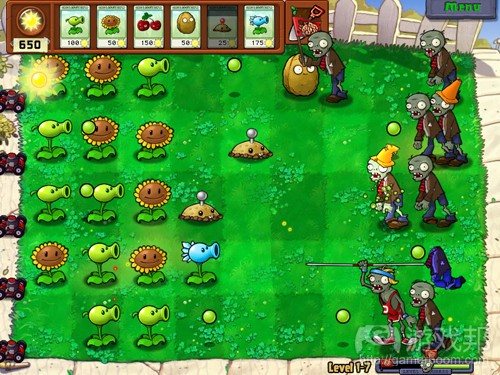

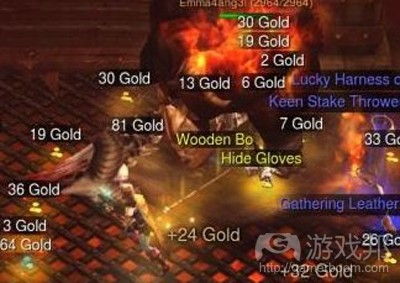

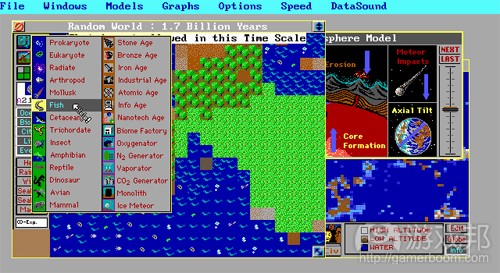

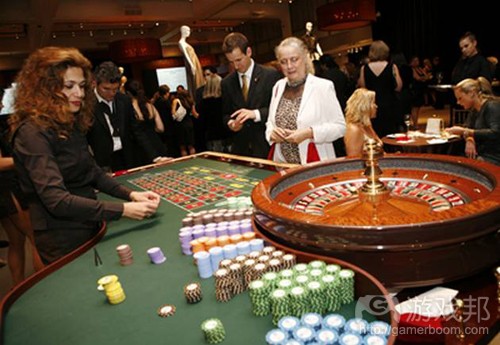
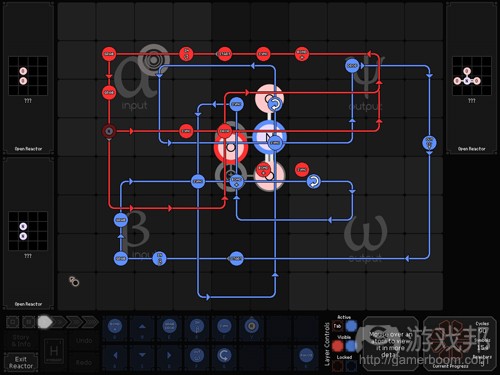
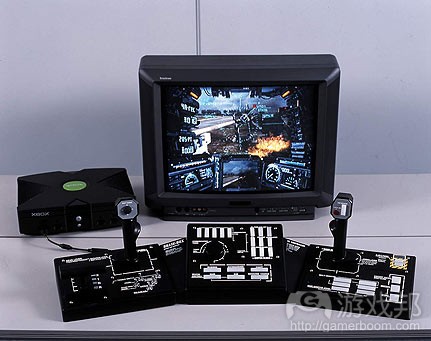
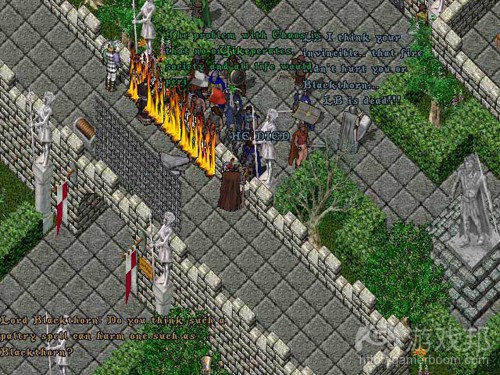
















 闽公网安备35020302001549号
闽公网安备35020302001549号